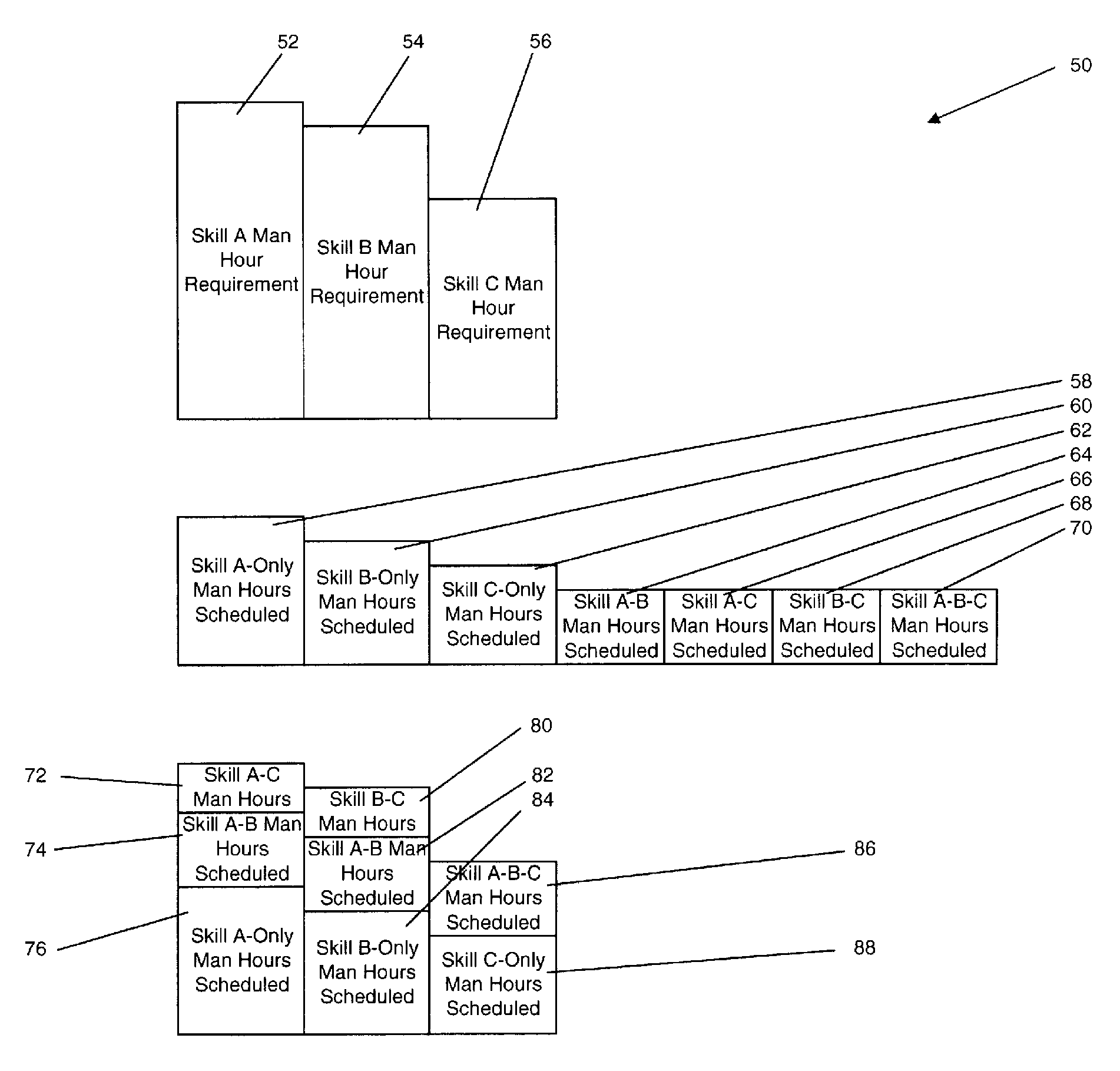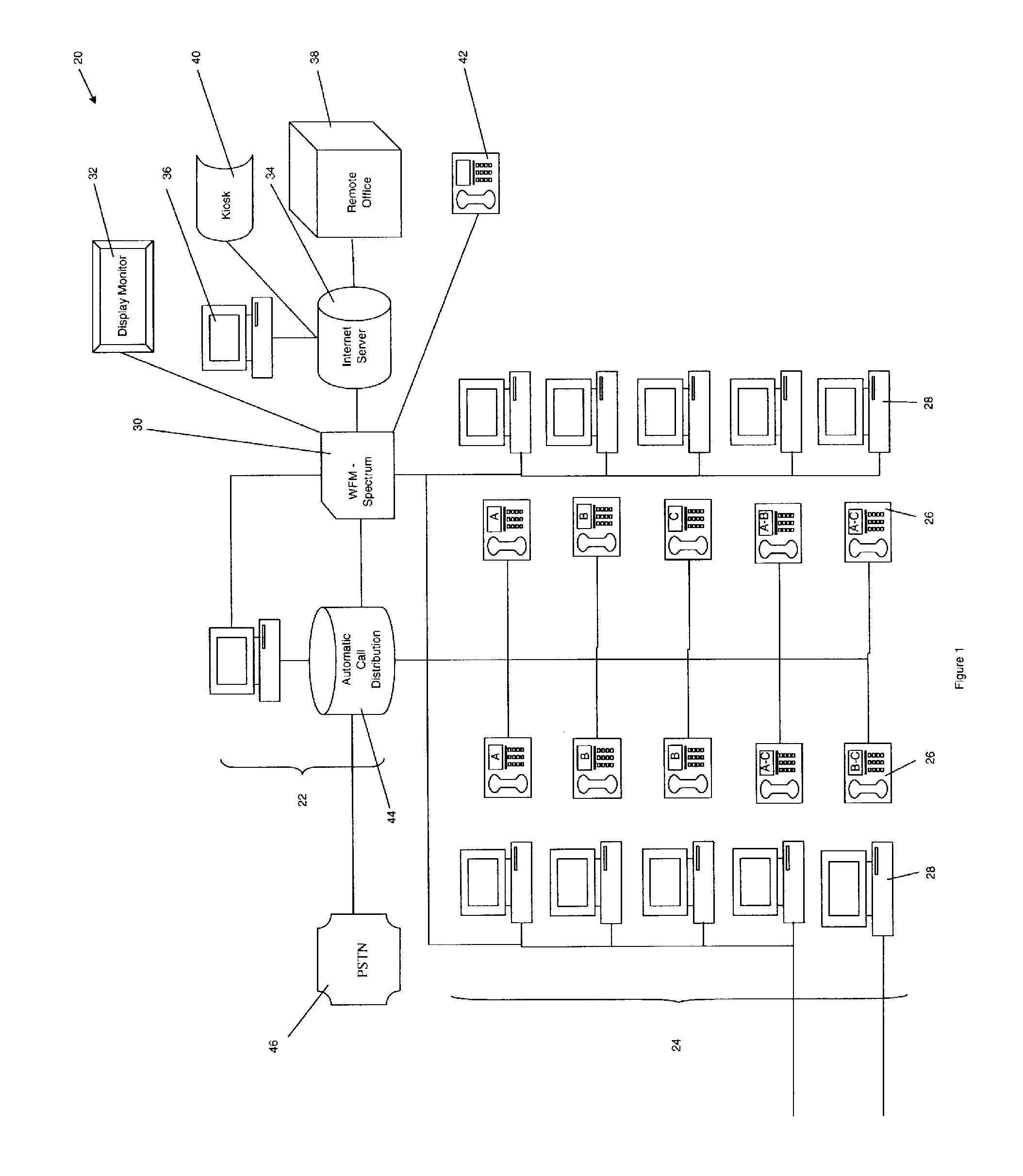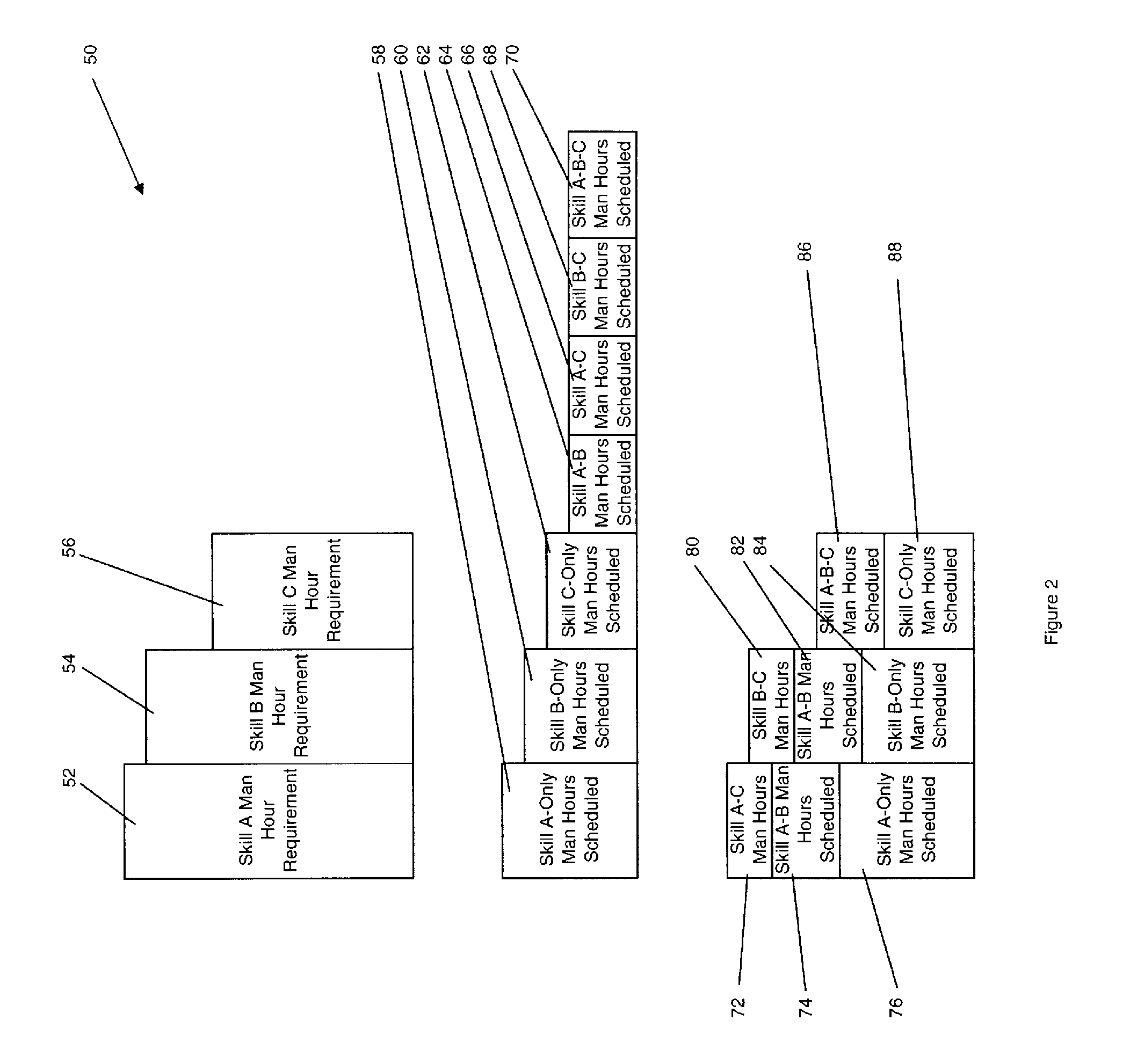Historically, management and scheduling of a large employee workforce has been a complex and
time consuming task.
With regard to scheduling large groups of employees, it is difficult to predict the number of employees required to adequately staff a particular shift.
Scheduling employees can be a complex task as many different factors constrain which employees may be selected for a particular shift.
For example, scheduling limitations exist regarding hours worked per week, hours worked per day, or other factors.
Further, certain shifts may unexpectedly require additional employees to meet unexpected increases in
workload, or conversely, certain shifts may require fewer employees than previously anticipated.
Being correctly staffed is essential to efficient operation of a call center, since too many employees will result in excess labor costs, and two few will results in lost opportunity and / or poor customer service.
A major deficiency in the current state of the art for WFM systems is that the forecasting / scheduling tasks must be accomplished in enough time to notify the workforce of the required schedules.
This necessitates considerable
lead time in the creation of a forecast.
Also, any significant change to the forecasting criteria which results in changes to the forecast forces upon management the difficult choice of regenerating schedules for the employees or just trying to adjust the workforce outside of the WFM
system.
Another major deficiency with the current state of the art for WFM Systems is that there is often resistance on the part of the employees to work shifts that are (from the employees perspective) arbitrarily assigned by the WFM
System.
Features like employee preferences, shift bids, and the ability to lock down some of the schedules are attempts to mitigate this problem; however they are not adequate solutions to the problem because loaded information is static and lives are dynamic.
The
system cannot forecast peoples' actual preferences because they change from
day to day.
One of the challenges in routing calls to individuals is how to achieve economies of scale when call volumes are low.
While the benefits provided by the employment of MS Agents are well established, and the ACD systems provide excellent support for their use, the current state of the art of WFM systems is not up to the task of dealing with the challenges presented by the MS Agent.
The real challenge presented by the MS Agents is that the number of agents required is driven by the total number of calls that will be received and must therefore be determined independently for each skill.
This makes determining how many agents are scheduled to work any given skill difficult to determine when you have MS Agents.
Several attempts have been made to overcome these types of problems however, these attempts do not fully overcome the disadvantages of the prior art.
Furthermore, the Kepley reference does not provide means to account for schedule changes.
Absent these features, a system based on the teachings of Kepley still suffers from many of the disadvantages of the prior art.
However, the methods and apparatus of these systems still possess several disadvantages of the prior art.
Among others, system configured according to the teachings of these references still lack an ability to schedule based on employee and not shift, lack an ability to provide the schedules on an employee distributed basis and lack the ability to conveniently and easily deal with schedule changes.
 Login to view more
Login to view more  Login to view more
Login to view more 


